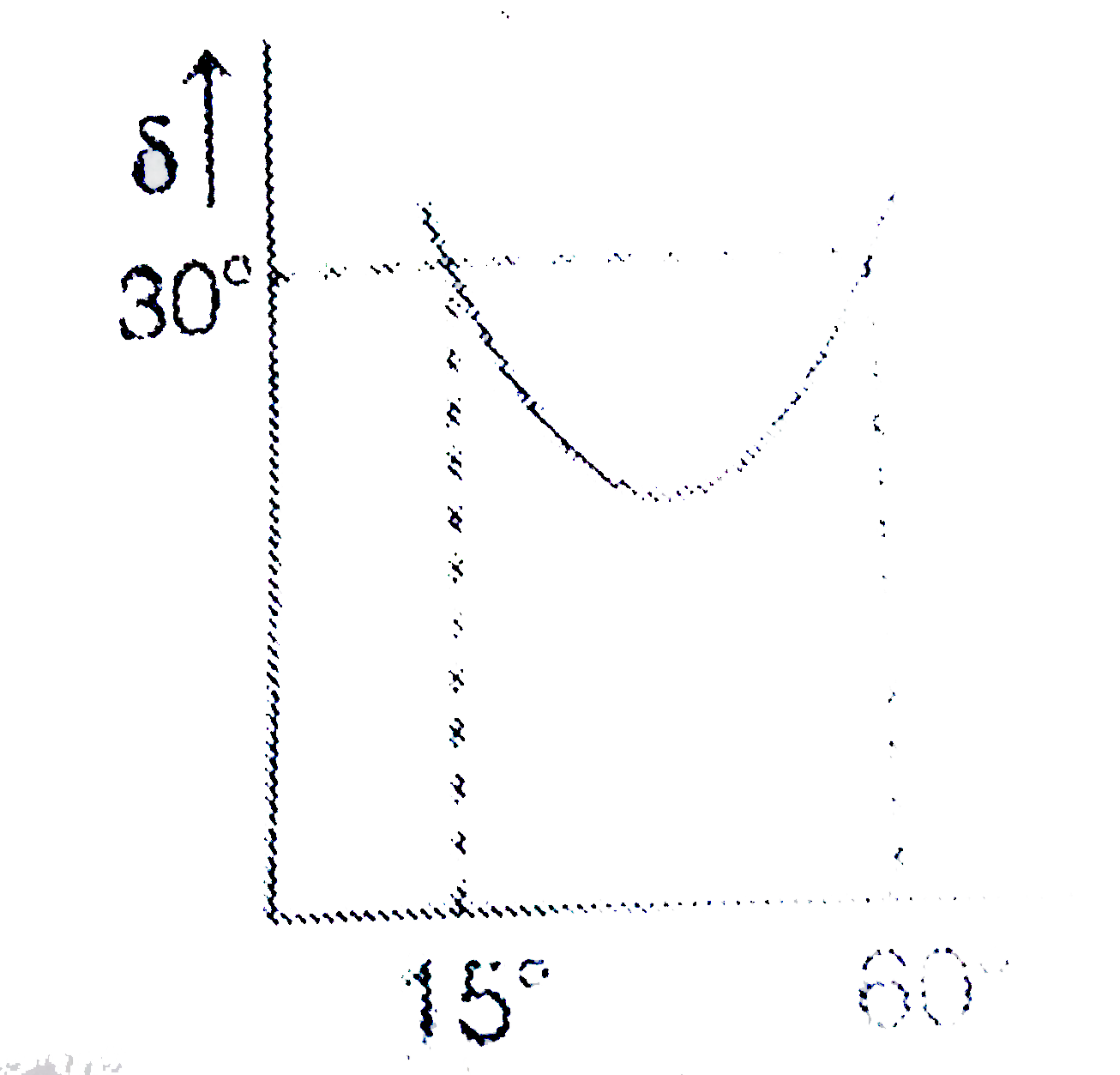A light ray is incident at an angle of incedence (π/4). The graph of sin(A−π/6) versus sin e is shown in fig. The minimum angle of devation corresponds to a prism with angle (e=angle of emergence )

90∘
60∘
45∘
30∘
The correct Answer is:B
Step by step video solution for A light ray is incident at an angle of incedence (pi//4). The graph of sin(A-pi//6) versus sin e is shown in fig. The minimum angle of devation corresponds to a prism with angle (e=angle of emergence ) by Physics experts to help you in doubts & scoring excellent marks in Class 12 exams.
Updated on:21/07/2023Topper's Solved these Questions
- GEOMETRICAL OPTICSBook:AAKASH SERIESChapter:GEOMETRICAL OPTICSExercise:ADDITIONAL PRACTICE EXERCISE -I (LEVEL-II LECTURE SHEET (ADVANCED) MORE THAN ONE CORRECT TYPE QUESTIONS)
Explore 3 Videos
- GEOMETRICAL OPTICSBook:AAKASH SERIESChapter:GEOMETRICAL OPTICSExercise:ADDITIONAL PRACTICE EXERCISE -I (LEVEL-II LECTURE SHEET (ADVANCED) LINKED COMPREHENSION TYPE QUESTIONS)
Explore 8 Videos
- GEOMETRICAL OPTICSBook:AAKASH SERIESChapter:GEOMETRICAL OPTICSExercise:ADDITIONAL PRACTICE EXERCISE -I (LEVEL-I(MAIN) STRAIGHT OBJECTIVE TYPE QUESTIONS)
Explore 21 Videos
- ELEMENTS OF VECTORSBook:AAKASH SERIESChapter:ELEMENTS OF VECTORSExercise:QUESTIONS FOR DESCRIPTIVE ANSWERS
Explore 10 Videos
- LAWS OF MOTIONBook:AAKASH SERIESChapter:LAWS OF MOTIONExercise:PRACTICE EXERCISE
Explore 106 Videos
Similar Questions
A slab of transparent materials is made as shown in the figure. Monochromatic parallel beams of light are normally incident on the slabs. The thickness of C is twice the thickness of B. The number of waves is A= the number of waves in the combination of B and C. The refractive index of material A is μ0=1.5 and that of C is μ2=1.4

View SolutionWhen a ray of sun light passes through the prism, each colour of light has its own speed in the glass. The seven colours come out of the prism with different angles of deviation. Red deviates least and blue deviates maximum. Thus a prism can disperse a white light into seven colours which is called colour spectrum.

For a thin prism, the angle of deviation is given as δ=(n−1)A. The angle of dispersion is given as ϕ=δv−δr. The dispersive power of a prism is ω=ϕδmean=ϕδy
Using the above ideas, give answer the following questions.
A prism has R.I. for violet and red nv=1.523,nr=1.5145. If the angle of prism is A=2∘ the dispersive power of the prism is :
View SolutionA ray of light passes normally through a slab (μ=1.5) of thickness t. If the speed of light in vacuum be C, then time taken by the ray to go across the slab will be
View SolutionFind the components of a vector A=2ˆi+3ˆj along the directions of ˆi+ˆjandˆi−ˆj.
View SolutionA force of 50 N acts on a body of mass 10 kg at rest. Its velocity after 5 seconds if the same force acts, is
View SolutionFor a prism kept in air, it is found that for an angle of incidence 60^(@) , the angle of refraction 'A', angle of deviation delta , and angle of emergence 'e' become equal. The minimum angle of incidence of a ray that will be transmitted through the prism is
View SolutionFigure shows the graph of angle of deviation del versus angle of incidence i for a light ray striking a prism. The prism angle is
View SolutionThe angle of a prism is 60∘ When light is incident at an angle of 60∘ on the prism, the angle of emerge is 40∘. The angle of incidence i for which the light ray will deviate the least is such that
View SolutionA ray of light passes through the equilateral prism such that angle of incidence is equal to the angle of emergence if the angle of incidence is 45∘. The angle of deviation will be
View SolutionThe angle of a prism is 60^(@) . When light is incident at an angle of 60^(@) on the prism, the angle of emergence is 40^(@) . The angle of incidence i for which the light ray will deviate the least is such that
View SolutionFigure shown the graph of angle of deviation δ verses angle of incidence I for a light ray striking a prism. The prism angle is

View SolutionFigure shows graph of deviation δ versus angle of incidence for a light ray striking a prism. Angle of prism is

View SolutionA light ray of angles of incidence 40∘ emerged from the prism in minimum deviation position. Then what is the angle of incidence on the second surface ?
View SolutionA light ray is incident at an angle of incidence (π/4). The graph of sin(A−π/6) versus sin e is shown in fig. The minimum angle of deviation corresponds to a prism with angle. (e = angle of emergence)

View SolutionFigure shows graph of deviation delta versus angle of incidence for a light ray striking a prism. Angle of prism is
View SolutionWrite a relation between the angle of incidence (i), angle of emergence (e), angle of prism (A) and angle of deviation (d) for a ray of light passing through an equilateral prism.
View Solution
